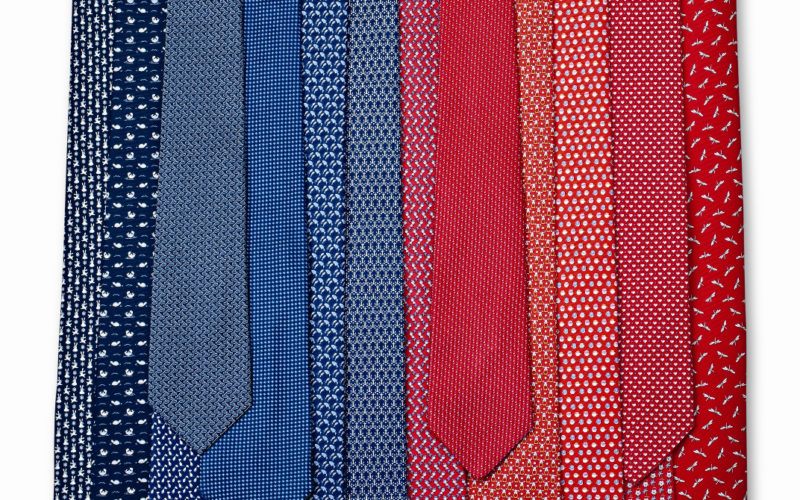Q. Are solid-color ties out of date? In the past I would wear a solid black tie, but now I fear it looks 1960’s. Obviously some still wear solid red, but is anything else solid still in style?
A. Solid ties certainly are still worn, although you are correct that they may be less common than in the past. Let me walk you through some details to consider.
There is a definite difference between solid ties. The fabric and the color determine a tie’s level of dressiness and can make a significant difference. Many men don’t realize what the different fabric options are and how their uses differ. A well-dressed man’s tie can be silk (dressiest), cotton or wool (more casual). It can be smooth (dressy), pebbled or knit (less so). The fabrics should be an appropriate mix with the rest of the outfit, not too dressy or too casual to be worn together. And while those are important, the feature we notice first is color.
Bright solid-color ties only work in a few colors. Red and blue work best. Other solid colors work well if they are not too bright. Beyond the most famous current solid red tie wearer, many men like the look regardless of politics. It is a versatile look and goes well with many items in a man’s wardrobe.
Less common solid-color ties are yellow, orange, green, and purple. These all need to be a somewhat muted shade to look elegant. It’s best to combine them with neutral colors, such as with a pair of khakis or a tan cotton suit, to tone down their impact and make them an appropriate casual choice. You can also wear them with jeans for activities with friends and family, but they might not be appropriate with anything more formal than a sport jacket, such as a dressy blazer or a suit.
More common solid ties in muted colors include medium blues, dark reds, pastels, neutrals such as gray, khaki, and olive. They go with everything from casual sweaters to blazers and suits, and show a man who has an interest in putting his clothes together with a bit of style.
Seemingly solid, blended color. For those hoping to branch out a bit, there is a lesser-known pattern that gives the impression of a solid color while having more variety. A “grenadine” is not so much a pattern as a slightly pebbled texture/weave; it’s a lot dressier than a knit. The grenadine is elegant and versatile, a sure sign that you know a thing or two beyond the ordinary. Sean Connery, the ultimate James Bond, used it superbly to create a sophisticated look. .
A solid white tie would be out of place on anything other than white tie and tails. Wearing a white tie with any shirt, and especially with a dark dress shirt, immediately calls to mind the gangster image of Nathan Detroit in “Guys and Dolls” — to be avoided at all costs.
The black tie you used to wear is still widely worn by traditional dressers who often combine it with a nice small-plaid shirt layered under a crew-neck sweater (where only the tie’s knot shows). My favorite tie for this casual plaid-shirt-sweater-and-tie look is a solid black knit. In this mix, any tie with a pattern would be “too much.” It also works with a navy knit tie. Both present a tasteful preppy image. .
Still, an important concern with a black necktie is that it should be the current and correct width – not too wide nor too skinny. Even so, in my opinion, the most serious and most common mistake that men make when wearing a necktie is knotting it so it is too short or too long. A tie is supposed to extend down as far as the belt, neither longer nor shorter. The wrong length can very quickly become clown-like.
With the right size, right knot/length, and combined tastefully, for many men, a solid tie continues to be a comfort, limiting concerns of color matching and clashing patterns.
Please send your men’s dress and grooming questions and comments to MALE CALL: Lois.Fenton@prodigy.net









